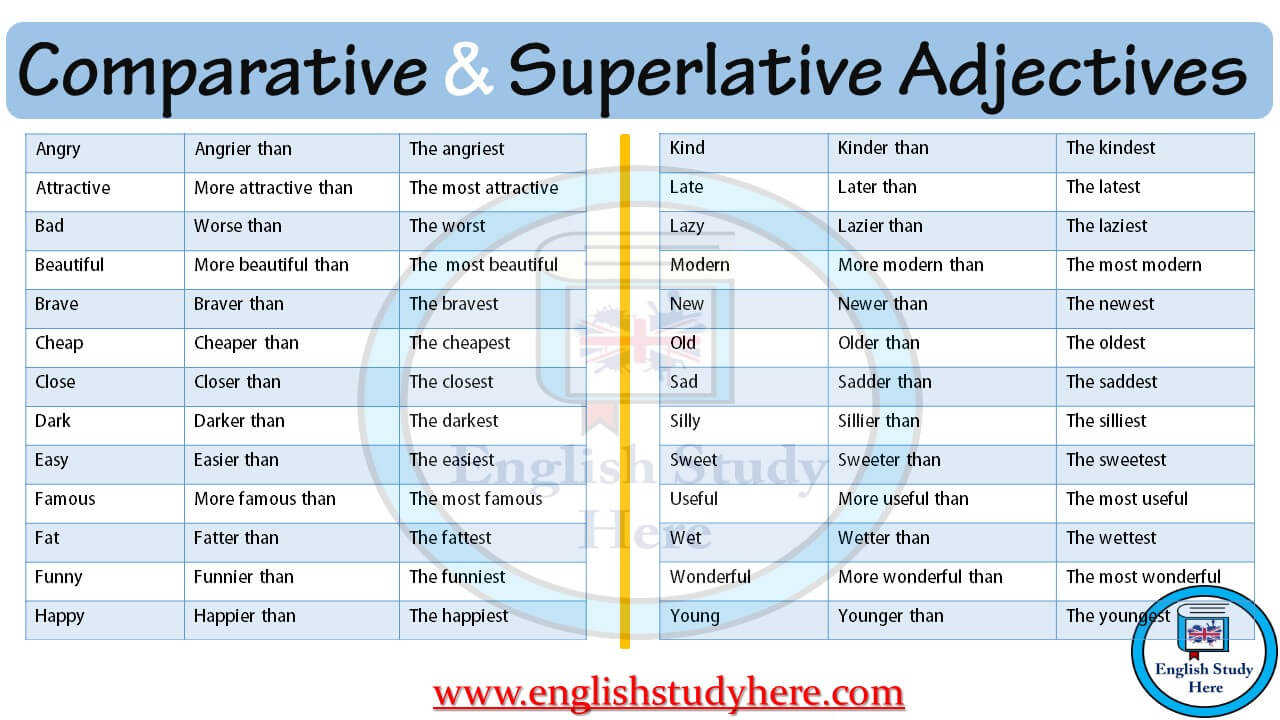

When it comes to translating Latin comparatives and superlatives, be aware that their meanings are more flexible than those in English and can be expressed in a variety of different ways. These forms decline like ‘bonus, -a, -um’.

The superlative for pulcher, pulchra, pulchrum ‘beautiful’ is pulcherrimus (masculine), pulcherrima (feminine), pulcherrimum (neuter) ‘the most beautiful’. The formation of the central stem of the superlative depends on the type of adjective. ‘-ima’ for the feminine form, and ‘-imum’ for the neuter form. To form the superlative of most Latin adjectives we use the ending ‘-imus’ for the masculine form,

To do this we add ‘-est’ to the end of the adjective or precede it with ‘most’. When we compare more than two things in English we often use the superlative form of an adjective. Apart from the nominative singular ending of ‘-ior’ or ‘-ius’, these forms decline like third declension nouns.


 0 kommentar(er)
0 kommentar(er)
